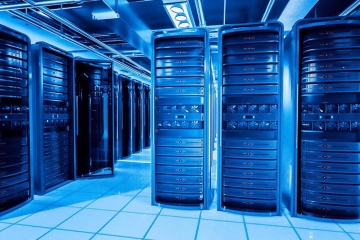Is this the time for data center owners to rise to the challenge and be the catalyst for monumental progress toward water sustainability and security?
Data centers provide an essential service in the business world today. The explosive growth of digital-consumption, the adoption of cloud-based systems, and the Internet of Things (IoT) have increased dependence on data centers, and all market signals confirm this dependence is here to stay. According to IHS Forecasters, “the IoT market will grow from an installed base of 15.4 billion devices in 2015 to 30.7 billion devices in 2020 and 75.4 billion in 2025.” Meeting customer demands will require data centers to continually expand in capacity and upgrade their technology.
What are the implications of this expansion when it comes to precious resources such as water?
Right now, data centers are in a truly unique situation with regard to impacting global water solutions. Because they are so essential to business operations, owners have the opportunity to build a solid business case to invest in water stewardship, which positions data centers in a unique and exciting ‘watershed moment’ position.
The Business Case for Water
While data centers may not be the largest water consumers in a region, like any operation, they are dependent upon sustainable watersheds. Many data center designs utilize water-cooled chiller systems to prevent their machines from overheating by distributing cool water to the data center’s air conditioning units. However, due to growing demand, centers are increasingly being built in water-stressed regions.
For example, in drought-stricken India, where the data center industry accounts for approximately $2 billion, 80% of Indian states are facing medium to high water risk as the surface water and groundwater reserves have been depleted. With industrial water demand expected to increase from 40 billion to 100 billion m3/year by 2030, India and its companies are facing a real crisis. Currently, one in five businesses located in water-stressed areas of India have ceased operations for more than 60 days due to shortage of water. From a business perspective, temporary downtime at a data center is unacceptable to the customer since instant data retrieval is expected--this translates to a direct loss of profit for the data center, as well as negative reputation and brand impacts.
In order to effectively manage water-related business risks and opportunities, data centers must understand how to monitor and keep a pulse on current and projected conditions at their regional or local level. A first step is to conduct an initial screening of data center locations to determine the relative level of potential watershed sensitivity--the results can better align data center operations with corporate water stewardship goals and initiatives, as well as help drive more informed decisions on future site locations and data center design. “Data centers are meant to stay in place for a while, so they need to get ahead of water challenges and make sector-wide progress to increase efficiency,” says Antea Group’s Sustainability Practice Lead, Nick Martin.
Addressing Water Data Gaps
The world is facing a significant water supply-demand gap over the coming decade, with many experts projecting a gap of up to 40%. Growing expectations placed upon companies, combined with many organizations discovering the real importance of water to their businesses, have resulted in unprecedented advancements in water stewardship practices. However, addressing such a significant potential supply-demand gap and the hyper-localized nature of water challenges will require faster, more informed, and more collaborative investment decisions moving forward.
Significant obstacles to achieving water sustainability exist, with one of the most critical being the availability of watershed-level data and technology-enabled knowledge sharing. This is such a significant issue that the UN and World Bank have convened an international High Level Panel on Water, with a main focus on water data and a core objective of “enabling governments, private sector and civil society to diagnose their challenges, set priorities, and guide their implementation.”
Leading companies acknowledge that investments are necessary and collaboration is required, but continue to lack the necessary data to make informed, confident, and justifiable decisions that drive the most meaningful results. The requisite collection, consolidation, and analysis of global and watershed-level data can only be achieved through leveraging data center capacity and the ability to synthesize big data into common and accessible platforms.
Moving Forward Together
So is this a literal ‘watershed moment’ for data center owners to rise to the challenge and be the catalyst for monumental progress toward water sustainability and security? The data center industry will continue to grow significantly, but must do so in a sustainable and forward-looking manner that leverages its position to positively influence global water challenges. The time may now be right for the data center industry to come together through consortiums like EHSxTech, leveraging its full potential of combined resources and technologies to overcome water data challenges.
Want more news and insights like this?
Sign up for our monthly e-newsletter, The New Leaf. Our goal is to keep you updated, educated and even a bit entertained as it relates to all things EHS and sustainability.
Get e-NewsletterHave any questions?
Contact us to discuss your environment, health, safety and sustainability needs today.





